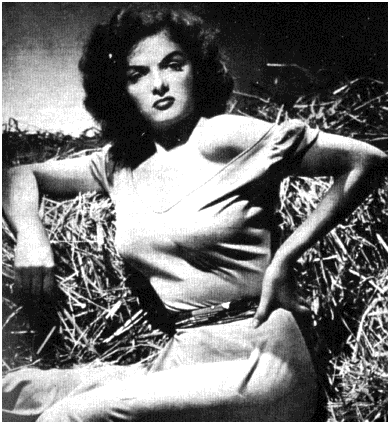Jessie Willcox Smith, Elizabeth Shippen Green, and Violet Oakley lived on the Philadelphia Main Line and were fairly important artists, muralists and illustrators of their time, the early 20th Century. They lived together on an estate that was called "The Red Rose Inn," where they took the pledge to stay true to each other, through thick and through thin, forever and ever. The Red Rose Girls is thick with their illustrations and murals --- along with photographs of some of their art works, and them, their friends, family and worksites. The author indicates that the three might have been lesbian lovers --- but who knows and who cares? At that time, women could live together, even pledge eternal love to each other, in full innocence: what happened at night or between the sheets was rightfully as considered no one's business.
This volume is grand, with a generous selection of their artworks. However, because of their chosen media --- government-sponsored murals, heavily symbolic, overwrought magazine drawings --- with titles like "Admiral Penn Denouncing and Turning His Son From Home Because of His Sympathy with the Despised Sect of Quakers" --- the reproductions leave something to be desired, and, for that reason, the photographs may turn out to be the most accessible part of their history.
For
The
Boys
<The Racy
Pin-Ups of
World War II
Max Allan Collins, Editor
(Collectors Press)
 For those of us who lived through WWII, it was Bundles-for-Britain, scrap drives, "A" "B" and "C" gas stickers, "A Slip of the Lip/Will Sink a Ship," blackouts, bronze and gold stars in house windows, men everywhere in uniform, sugar and meat rationing coupons, War Bond Drives, strange names from around the world (Pearl Harbor, Iwo Jima, Stalingrad, Rabault, Utah Beach), and Pin-Ups.
For those of us who lived through WWII, it was Bundles-for-Britain, scrap drives, "A" "B" and "C" gas stickers, "A Slip of the Lip/Will Sink a Ship," blackouts, bronze and gold stars in house windows, men everywhere in uniform, sugar and meat rationing coupons, War Bond Drives, strange names from around the world (Pearl Harbor, Iwo Jima, Stalingrad, Rabault, Utah Beach), and Pin-Ups.Pin-Ups! What a concept. The inductees were jammed together in training camps, or overseas, and there were, supposedly, no women, and so out came these cartoon characters --- women with flimsy dresses and pursed lips and inflated breasts and ill-clad buttocks.
The pictures and drawings were hung everywhere: on barrack walls, inside lockers, and strangest of all --- painted on the sides of the various warplanes.
B-24 and B-25 and B-29 bombers sported mammalian caricatures, given names like "Shoo-Shoo Baby" and "Sweat'er Out" and "Playmate" and "Six Hits and a Miss." Fighter planes like the P-51s and P-61s and F4Us were labeled "Heats On," "Midnight Belle," and "Hawkeye Hattie," and, as well, sported ill-painted ladies in various poses and various states of undress.
It was designed, we believe, to vitiate the raw truth of what a bomber or fighter was designed to do to "the enemy." In this way, the lubricious figures made very peculiar counterpoint to the real work of war --- bullets and bombs (cluster, phosphorous, and atomic), aimed kill other pilots or, more probably, the victims down there below --- in Dresden, in Tokyo, in Berlin, in Nagasaki, in Hamburg, in Hiroshima. The merry message these "pin-ups" delivered was, Forget what's happening down there because up here in the sky it's nothing but buxom young ladies flying around in various stages of undress.
Picturing
New York
The City From
It's Beginnings
To the Present
Gloria Deák
(Columbia)
It starts with drawings from the very earliest days, when Giovanni da Verrazzano arrived in New York Bay and encountered Indians "dressed with the feathers of birds and various colors" --- giving a hint of colorful parades to follow centuries later. There are early maps, drawings of religious services, chapters on the "Merchant Princes," portraits (usually of the very rich), drawings of tenements, photos of country estates, paintings of Wall Street, and whole chapters devoted to such things as "Painting, Theatre, Music, and Dance."Like the city itself, it is a very confusing olla podrida, with due homage to Walt Whitman, Truman Capote, Madison Square Garden, "Triumphs of Architecture and Urban Engineering." The whole is thick, heavy, placid, comfortable --- filled with information about homes, ferries, the movie industry, and such heavy facts as,
More than 130 commodities were produced in Queens by three times that number of factories of the early decades of the twentieth century. They included...automobiles, airplanes, printing presses, and turbine engines, as well as...buttons, chewing gum, hats, and biscuits.
The only thing missing is more of the reality of life then and now that New York represents to most of us outsiders, which is row after row of dark, desolate, dusty housing --- both public and private --- which no amount of glitter and glamor can hide.
What
Was
True
<The Photographs
And Notebooks of
William Gedney
Margaret Sartor,
Geoff Dyer, Editors
(Lyndhurst/Norton)
William Gedney sought subjects in the streets of New York, the hippy hangouts of San Francisco, the world of Calcutta, and the backwoods of Kentucky. He was successful at his chosen art --- winning, during his lifetime, many grants and awards for his honest shots of real life.What Was True contains a hundred or so of these photographs, arranged with notes that he took while working on his various projects. These include the banal and the tired, but then statements like
Dame Arbus committed suicide last week. It seemed unreasonable.
Or, this quote from Redon
One must respect black, nothing prostitutes it...it is the agent of the mind far more than the most beautiful color of the palette or prism.
His style is sharp and no-nonsense and sometime brutal, the very opposite of romantic. It is the portraits of the very poor people of India and the hill country of Kentucky, however, that stay with one.
--- Lolita Lark,
Carlos Amantea,
Ignacio Schwartz, and
R. R. Pennypacker, III